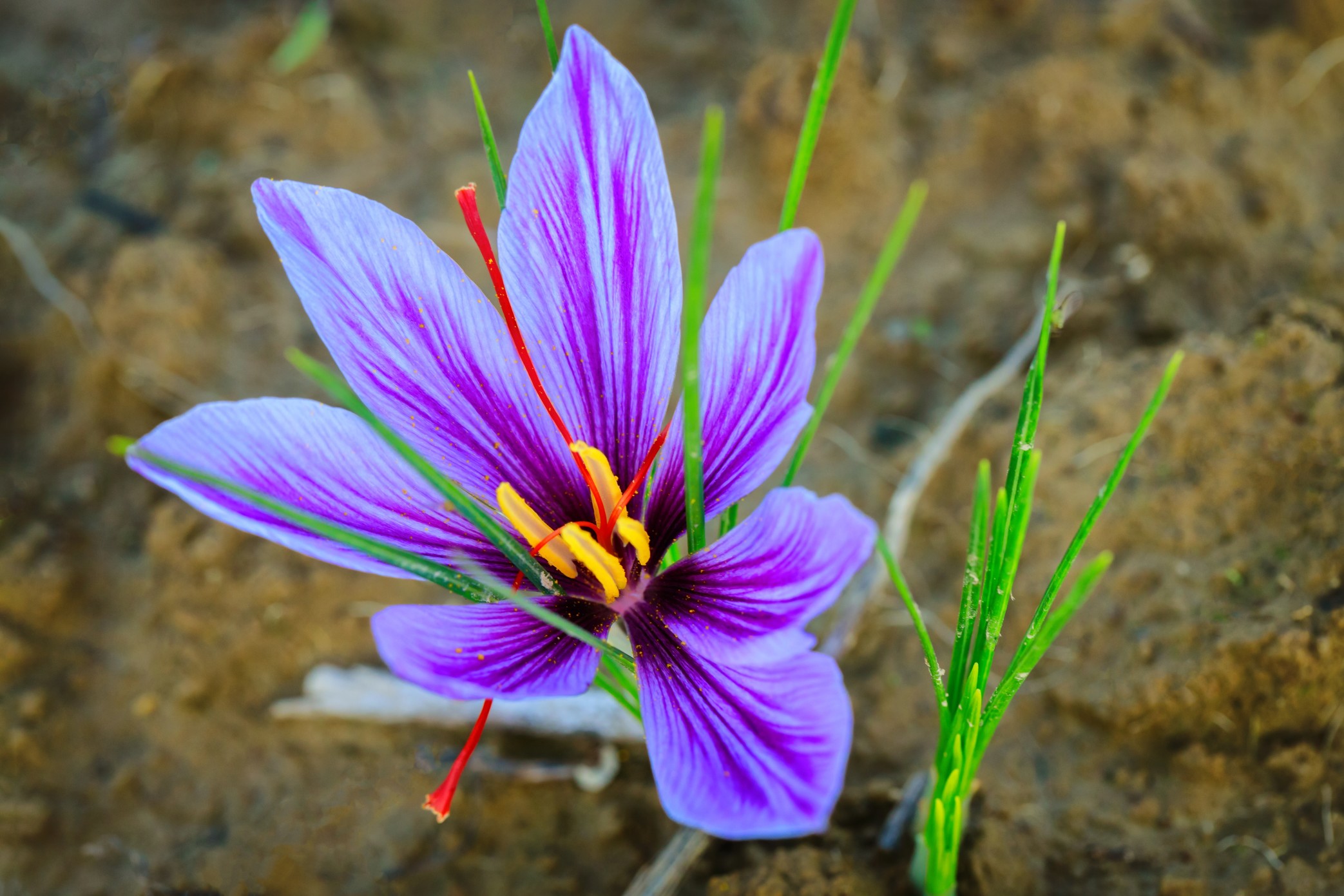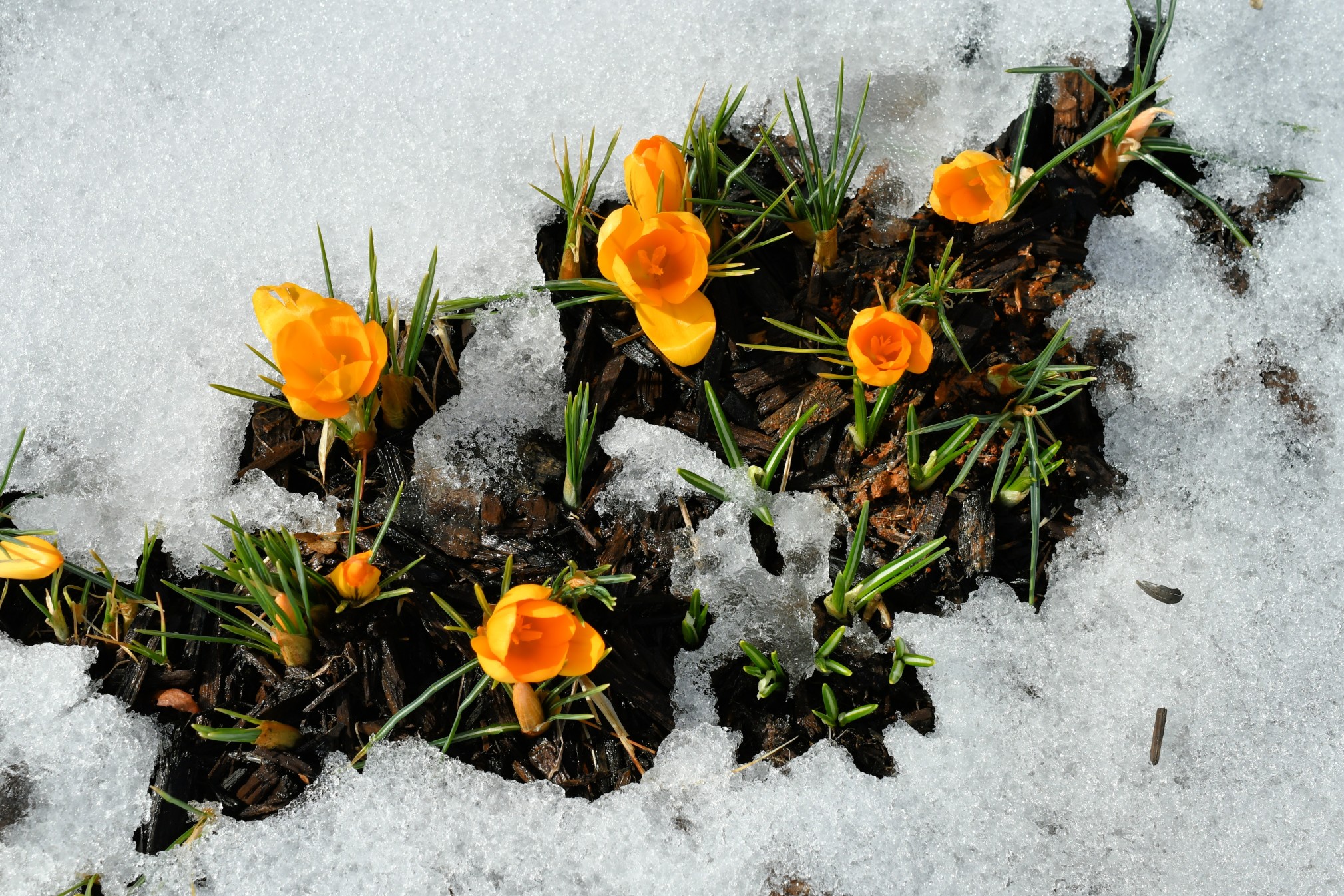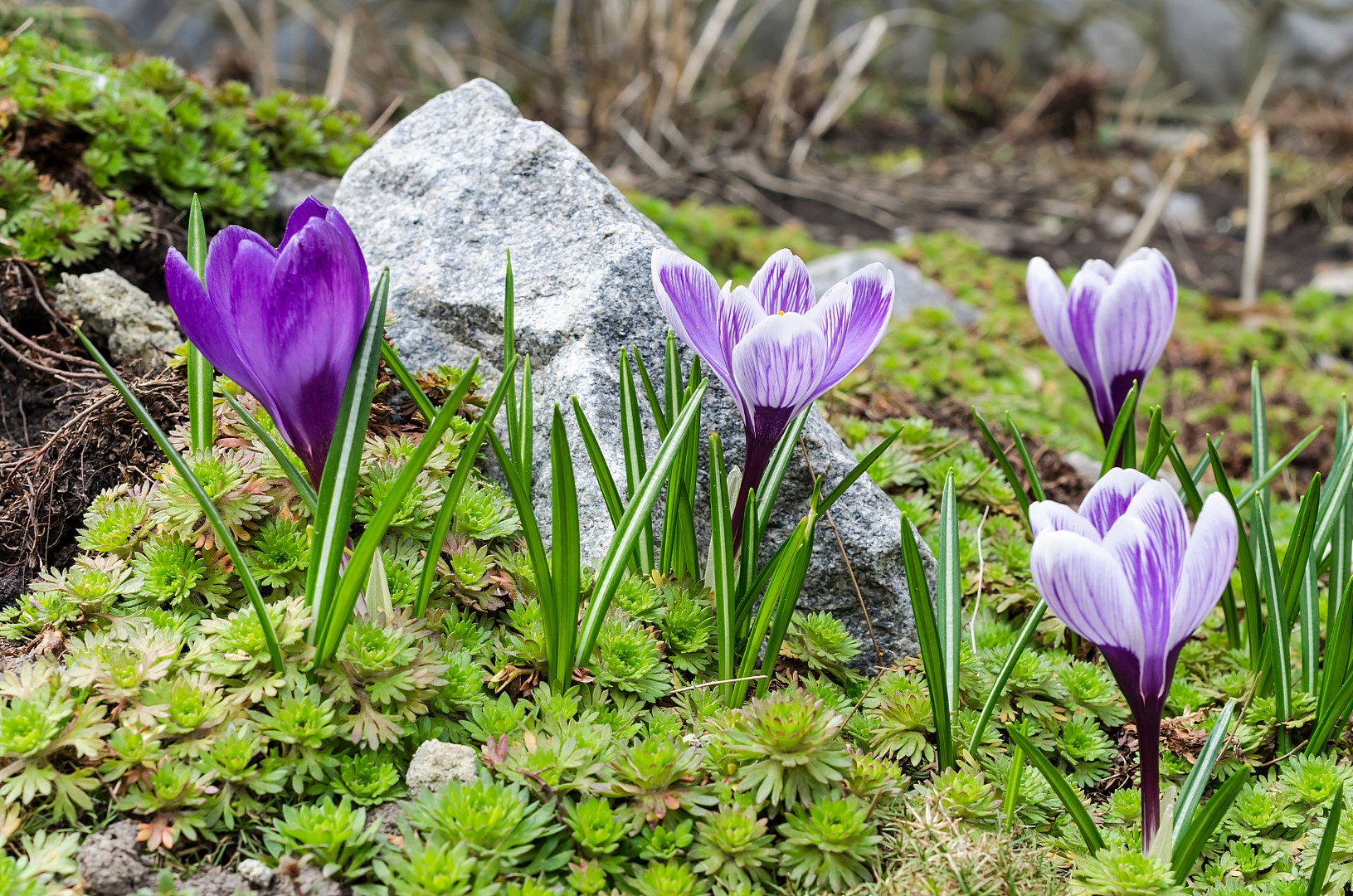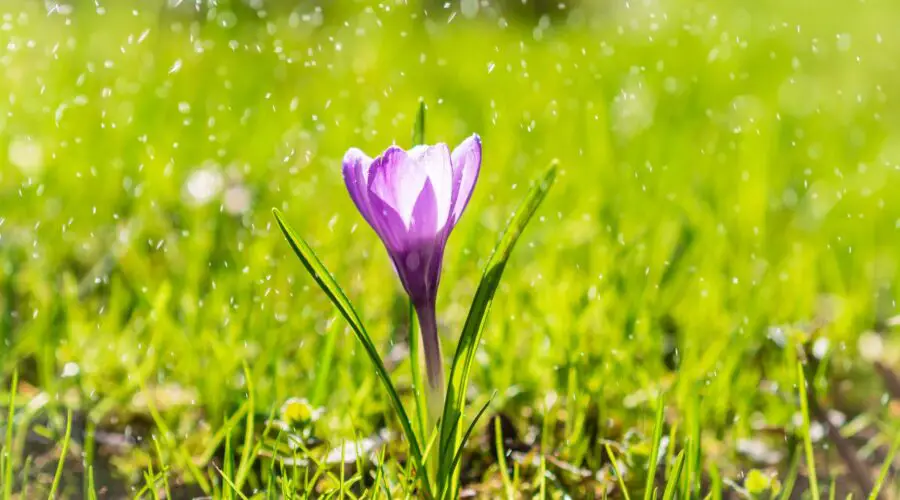Crocus Flower Meaning and Symbolism
It’s always a thrill to see a Crocus in full bloom. Famous for their early blooming time, Crocuses are always a welcome sight to remind us that spring is not far away. These beauties herald the arrival of spring, often popping their heads up through the snow. And when they bloom, they feature a wide range of colors, transforming any landscape into a beautifully designed wonderland.
Etymological Meaning of the term “Crocus”
The name of the plant is derived from “krokos”, the ancient Greek name for saffron (Crocus sativus).
Crocus is a genus of about 90 species of perennials in the Iridaceae family, native to Asia, North Africa, Mediterranean Europe and Alps.
Crocus sativus, commonly known as Saffron Crocus, is the most important species of the genus. It has three stigmas and parts of it are often dried and used as a spice and a coloring agent. it’s worth to mention that the spice saffron is the most expensive spice in the world, mainly because it’s hand-harvested and requires a lot of manual work.

Myths and Legends of the Crocus
Crocus is connected with a range of myths and legends that mostly come from Ancient Greece.
Crocus in Greek Mythology
The best known Greek legend about the Crocus is the story of Crocus and Smilax.
According to legend, Crocus was a young man who fell in love with a nymph called Smilax. The gods were so pleased with his love and devotion that they granted him immortality and turned him into the plant of the same name. Similarly, Smilax is believed to have been given a similar fate and turned into bindweed so that the two lovers could be together forever. Another version of the myth says that he was unhappy with his affair. Infuriated by his arrogance, the gods punished him transforming Crocus into a flower.
This myth has numerous forms, but mainly includes unfulfilled and tragic love of a man who is turned into a flower. It is a sentimental story of a young man’s youth and unfulfilled love.
Another legend states that Crocus was a young man who was a companion of the god Hermes. One day, Crocus and Hermes were playing a game of discus and Hermes accidentally hit and killed his friend. Hermes was so distraught that he turned the mortal Crocus’s body into a flower. The first Crocus grew at the spot where he died, symbolizing rebirth and renewal of the body and spirit.
Crocuses: The Real Valentine’s Day Flowers
Crocuses are closely associated with St Valentine’s day. Roses may steal the show on that day, but Crocuses are the real Valentine’s Day flowers!
Valentine’s Day honors Saint Valentine, a Roman physician and Christian martyr who was jailed and sentenced to death for practicing Christianity. St Valentine is believed to have been a priest during the third century in Rome, when Christianity was not welcome in Roman society. It was a time when Christians were mistreated for their faith and horribly persecuted. Valentine had the reputation of healing the sick and praying for his patients. When he was caught marrying couples, he was arrested and dragged before the Prefect of Rome, who condemned him to death. During his imprisonment, Valentine befriended a jailer Astorius who respected his wisdom. He discovered that the jailer’s daughter, Julia, was blind and the only world she knew was through the eyes of her father. Valentine was executed On February 14, 269 AD. On the day of his execution, he sent Julia a hand-written letter wrapped with a yellow Crocus, one of his healing plants. He signed it, “from your Valentine”, which is where this holiday then got it’s name. When she opened the letter, she discovered a yellow Crocus inside and miraculously restored her eyesight. Suddenly, she experienced the feelings of joy and pleasure.
Therefore, the Crocus is often referred to as St Valentine’s flower and is associated with cheerfulness, pleasure, gladness and joy.

Crocus Flower Symbolism
Every flower has its own symbolic meaning and meaning in general. Crocus is no different and there are several meanings linked to this beautiful flower.
What Does Crocus Flower Symbolize?
The Crocus flower generally represents youth, innocence, rebirth, cheerfulness, pleasure, gladness and joy.
First of all, it symbolizes youth and innocence. It takes us to the days of our childhood when we had no care or the tedious responsibilities of adulthood to weigh us down. Those were the days when everything seemed to be simple, beautiful and magical.
The Crocus symbolizes rebirth and a neverending cycle of life. It signifies the arrival of spring, the promise of new beginnings and exciting new events. Crocuses are one of the first flowers to emerge after winter and have been known to bloom surrounded by snow. The flowering season depends on the variety and growing conditions. Generally, Crocuses will bloom again the following year if the conditions are favorable.
The flower also represents cheerfulness, pleasure, gladness and joy. This flower symbolizes cheerfulness due to the bright and vivid colors, and is therefore often used to add color to bouquets. Crocuses bring pleasure through the charm of their visual appearance. Their beauty attracts us and we enjoy looking at them again and again. They also signify gladness and joy and are often associated with thoughts of beauty.

The Meanings of the Different Colors of Crocuses
The most common color of a Crocus is purple, but it also comes in other colors. Crocuses of different colors have different symbolism.
White Crocuses symbolize youth, innocence, rebirth and purity.
The purple ones mean pride and dignity, while yellow Crocuses represent cheerfulness, pleasure, gladness and joy.
Crocuses are beautiful and popular flowers, and gifting them is always trendy. The color of flower you choose for a bouquet is as important as the type of the flower. Every color speaks something special so it’s really important to choose the perfect color to combine it in the perfect way. Make sure that the color of flower you are gifting out suits the purpose why you are sending it to the recipient.


